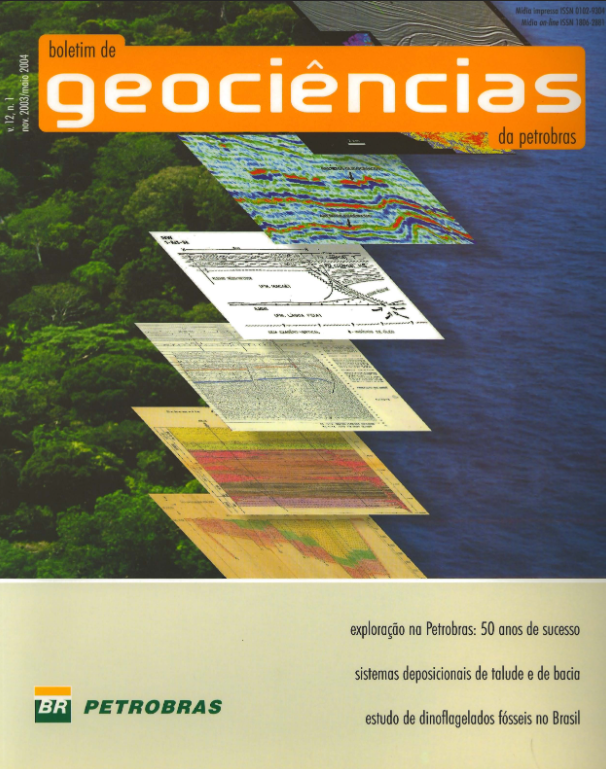Exploration at Petrobras: 50 years of success
Keywords:
history of exploration, sedimentary basins, petroleum discoveries, technologyAbstract
On completing five decades of activity, petroleum exploration developed by Petrobras in the Brazilian sedimentary basins has demonstrated an unquestion-able history of success. Created by Law 2004 of December 3, 1953, Petrobras assumed the undertaking of supplying Brazil with the fuel oil required to support the infant industrial park of the post-war years, thus emphasising the importance of petroleum as a base for national development. In addition to a record of important discoveries in the Recôncavo Baiano, the Conselho Nacional de Petróleo - CNP, provided Petrobras with the conceptual base for the implantation of an exploration structure that permit-ted the evaluation of the petroleum potential of the Brazilian sedimentary basins. Amongst the fundamen-tal principles left by the CNP was the continuous pre-occupation with the training of its technicians, a pol-icy that permeated, in full form, the exploration struc-ture of Petrobras throughout its history of activity. In view of the necessity for short-term results, which met the aspirations inherent in its founding, Petrobras was initially guided along its way by Walter Link, who drew up a exploration structure based on a team of North American technicians. The vision of Link was centred on the large Brazilian Paleozoic basins that might have contained the oil resources that would have given the Country its independence from imported oil. With little in the way of results to commemorate, the Link Report, presented in 1960, considered that the Brazilian basins did not have the potential for petroleum that had been initially imagined. Under the direction of Pedro de Moura in 1961, it became the role of Brazilian technicians to define a new exploration policy for petroleum in Brazil. Petrobras redirectioned its investments to the Sergipe-Alagoas basin, and was rewarded by the discovery of Carmópolis already in 1963, one of the largest oil fields in the Country, with more than a billion barrels of oil in place. In 1968, Petrobras began the study of the potential on the continental platform with the drilling of well 1-ESS-1. Also, in this year, the second well was drilled that led to the discovery of the Guaricema Field in the continental platform of Sergi-pe. However, it was in 1974, that there came about the first large oil discovery on the Brazilian continental platform in Albian carbonate rocks of the Garoupa Field of the Campos Basin. A number of discoveries at the end of the nineteen seventies and the first years of the nineteen eighties, principally in the Campos Basin, including by now the resources in turbidite beds, opened an ample perspective for the produc-tion of petroleum in Brazil, which by the end of 1984 would reach 500 000 barrels/day. At this same time, and thanks to the efforts of many generations, the first significant discovery in the Amazon region was finally made. This was the Juruá Field, an accumulation of gas in a Paleozoic basin just like those the potential of which for significant oil resources in the Country had been so often questioned. In the middle of the nineteen eighties there occurred the first oil discoveries in the deep waters of the Campos Basin amongst which included the giant Marlim Field with reserves of 2.7 billion barrels. Thanks to the challenges met and successfully overcome, there was about to begin a phase that would place Petrobras in an outstanding position together with the other great petroleum companies of the world. In accordance with the new petroleum law of 1997, Petrobras lost its exclusivity to oil exploration that up to now had been a federal monopoly, and began to function as a concessionaire. In this more recent period the great discoveries in the northern part of the Campos basin were made. Likewise, were made the important oil discoveries in the State of Espirito Santo where reserves exceed 2 billion barrels. This discovery is the first important oil accumulation found in the off-shore waters of the Espirito Santo Basin, some 35 years after the first well was drilled into the Brazilian continental platform. The recent discovery of large gas reserves in the Santos basin crown this history of success, rewarding the efforts of several generations that battled for the founding of the Company in the first place, and which today strive to maintain it as an icon of success and as an example of the work capacity of the Brazilian people. The national reserves, which in the year that the Company was founded were 15 million barrels, reached the expressive figure of 12.6 billion barrels of oil- equivalent by the end of 2003.
Downloads
Published
Issue
Section
License
This license enables reusers to distribute, remix, adapt, and build upon the material in any medium or format, so long as attribution is given to the creator. The license allows for commercial use.



